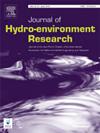The analysis of the water distribution network is complicated and requires several assumptions to simplify its problem definition. Demand Driven Analysis (DDA) is typically used to analyse the network assuming that all network nodes can deliver the required demand regardless of the available pressure. In the case of analysing an existing network under deficit condition such as pipe breakage or extra demand required for firefighting, assumptions used to simulate the network with DDA is not valid. Node Head Flow Relationship (NHFR) should be considered through Pressure Driven Analysis (PDA) to analyse the network. Most PDA methods assume that the networks are airtight which means that if the pressure at any demand node is negative, delivered demand will be equal to zero and the flow is permitted in the connected pipes (Siphonic flow). This assumption is hydraulically incorrect since the air is allowed to get into the connected pipes and prevent their flow leading to node isolation. In this paper, a new Pressure Driven Analysis to Prevent Siphonic Flow (PDA-SF) approach is proposed to analyze the network under deficit conditions and consider isolating the nodes that show available head less than node elevation. The PDA-SF was tested and compared to previous methods in four case studies under steady state analysis or extended period simulation. The case studies cover also different network conditions whether node isolation is needed or not. The PDA-SF was able to solve different networks where other methods failed to achieve the required demand or service pressure. The new PDA-SF method shall enable peers and modelers to better simulate and analysis water distribution networks.


